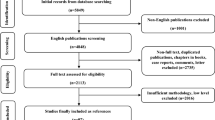Summary
Among the various benign biliary tract diseases, intrahepatic lithiasis is the most refractory condition to treat surgically. Recently, endoscopic treatment (mainly cholangiofiberscopic lithotomy) has been more and more frequently employed. A nationwide survey by questionnaire was conducted in 1985 to clarify the exact status of the current therapies for intrahepatic lithiasis in Japan. A total of 143 institutions (33.4%) responded to our questionnaire, and 2614 cases over a 10-year-period were collected and analyzed. Operation alone was performed in 53.8%, operation plus endoscopie treatment in 38.6%, operation plus dissolution therapy in 5.5%, operation plus endoscopie treatment and dissolution therapy in 0.04% and endoscopie treatment alone in 2.1%. The most common treatment was surgery. This was employed in 97.9% of all the patients, but endoscopie treatment was added in 40.7% of the cases to extract stones mainly intra- and/or post-operatively. Dissolution therapy was carried out occasionally, but with poor results. Conducting both adequate surgical biliary drainage and cholangiofiberscopic lithotomy may result in a marked improvement in the treatment of this intractable disease.
Similar content being viewed by others
References
Tsunoda T, Tsuchiya R, Harada N, et al: Long-term results of surgical treatment for intrahepatic stones. Jpn J Surg 1985; 15:455–462
Yamakawa T, Komaki F, Kitano Y, et al: Intrahepatic stones and postoperative choledocoscopy. Gastroenterol Jpn 1980;15:577–583
Hwang M, Kuo R: Modified Roux-en-Y choledochojejunostomy with postoperative choledochofiberscopy in the treatment of intrahepatic stones. J Formosan Med Assoc 1980;79:631–636
Reserch group for the study of damage to intrahepatic bile ducts: Annual report 1980, Ministry of Health, Japanese government, Countermeasure project for incurable disease. 1981,131-134 (in Jpn)
Nakayama F: Intrahepatic calculi: A special problem in East Asia. World J Surg 1982;6:802–804
Wen CC, Lee HC: Intrahepatic stones: A clinical study. Ann Surg 1972;175:166–177
Maki T, Sato T, Matsushiro T: A reappraisal of surgical treatment for intrahepatic gallstones. Ann Surg 1972; 175:155–165
Yamamoto K: Intrahepatic periductal glands and their significance in primary intrahepatic lithiasis. Jpn J Surg 1982;12:163–170
Tsuchiya R, Tanaka N, Tsunoda T, et al: Extended hepaticocholedochojejunostomy for treatment of intrahepatic cholelithiasis. Chir Gastroent 1979;13:167–180
Nimura Y, Hayakawa N, Hasegawa H, et al: Endoscopie treatment of intrahepatic stone. I to Cho (Stomach and Intestine) 1984;19:437–453 (in Jpn)
Author information
Authors and Affiliations
Rights and permissions
About this article
Cite this article
Tsuchiya, R., Eto, T., Tsunoda, T. et al. Therapeutic strategy for intrahepatic lithiasis. Gastroenterol Jpn 24, 720–727 (1989). https://doi.org/10.1007/BF02774174
Received:
Accepted:
Issue Date:
DOI: https://doi.org/10.1007/BF02774174




